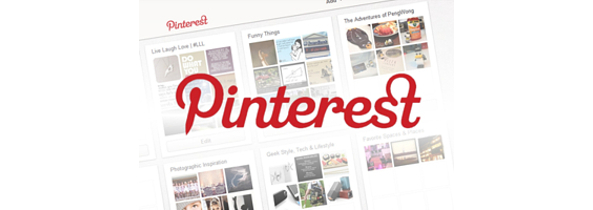

 Facebook and Twitter have revolutionized they way and frequency of shared content on the internet. These two social channels account for the majority of user generated content on the web — until now.
Facebook and Twitter have revolutionized they way and frequency of shared content on the internet. These two social channels account for the majority of user generated content on the web — until now.
Fairly “new” to the social sharing arena is an online community called Pinterest, which allows users to create virtual pin boards where they can “pin” digital content they find interesting, but in an organized and sleek way. This allows their followers to follow not just all of their pins, but the ability to subscribe just the boards most interesting to them.
Like many others, I was reluctant to join yet another online community, especially since the Pinterest bandwagon seemed to only feature recipe and home decor related content — valuable and entertaining in its own right, but not as relevant to me personally.
This of course is not surprising when you look at Pinterest’s member base of over 4 million, in which 80% of its members are educated women between the ages of 25-54 according to Ignite Social Media’s recent demographic data on Pinterest. While much of the content being shared is contributed by and for women, Pinterest has added additional categories like Automobiles, Men’s Apparel, Geek and Technology to attract some of the gentlemen (and additional women) as well.
But why does any of this matter? What makes Pinterest any different from other online communities, and why would businesses want to join? In short, it’s all about uniqueness, relevancy and visual appeal.
Crowdsourced Content Management
Since every user can create various boards to organize their shared content, Pinterest has managed to levy the burden of content management on to their own members, but in a manner that is fun and entertaining. This allows for much more “real world” and accurate organization of the shared content, and thus increased relevancy to their followers. Pinterest has even added a feature that allows users to grant permission to specific followers to contribute to their boards, thus adding a co-contributor-like experience between members. It’s also important to note that all of this shared content can also be shared to other popular communities like Facebook and Twitter.
Businesses Must Be Visual
Businesses that have products or services that can easily be translated into sleek images that are unique and aesthetically appealing, will be the most successful on Pinterest. As businesses post images that relate to their followers, their content is being republished (“pinned”) on individual member boards, to be shared with all of their followers who are also interested in that particular subject matter. The most relevant photos are the ones shared the most, and with the ability to click-through to additional content, this positions Pinterest to be a major player in regards to traffic generation for online marketers.
Pure Entertainment Without the Chatter
A major difference between other online communities and Pinterest is the purposeful lack of direct user-focused story telling. While you can surely gain valuable insights into the hobbies and tastes of the people and organizations you follow, the goal is not to keep up with every aspect of their daily lives. Outside of comments posted on pins, there are no status updates or geo-locational check-ins. Members login via the website or mobile device to simple scan through images and content which appeal to them. A dear friend of mine accurately compared Pinterest to a fashion magazine. It’s very visual, and has content relevant to the reader, but it’s mainly just a visual form of entertainment. If you want additional information, you can easily find out more, but it’s the visual aspect that made you give the page more than just a casual glance. This is the secret to Pinterest’s growing success. It’s pure entertainment, mixed with education and the ability of its members to organize and manage the content within the community, even if it is only at a subconscious level.
How Should Businesses Get Involved?
If your business caters to female internet users, Pinterest could be your ideal “buzz” generator. But businesses should be careful when deciding to use Pinterest for marketing and/or branding. If your products and/or services aren’t visually appealing, or in some cases, are simply horrible products, I wouldn’t suggest using Pinterest. An image can say a thousand words about your business, and you want to make sure it’s saying what you want it to say.
However, if your business does provide quality products and services, and you can capture the essence, functionality and purpose of what you provide — visually, then you’ll most likely be quite successful across all gender and age demographics.
It’s important to note that Pinterest prohibits the typical sales and marketing imagery you’d see everywhere else on the internet. So the key will always be to post content that is unique, relevant and visually appealing. Businesses must allow the qualities and allure of their products to sell themselves.
Related post
Schedule Online
BBB Accredited
 Empowered Ideas
Empowered Ideas1000 N. Main Street
Suite 215
Fuquay-Varina, NC 27526
Details About Our Accreditation








Leave a Comment